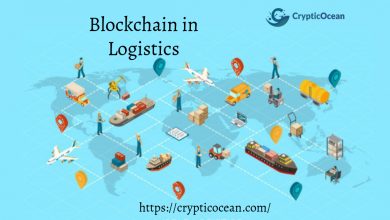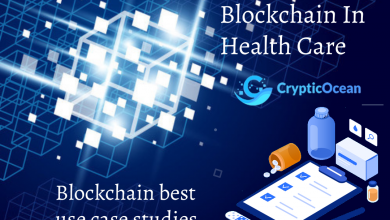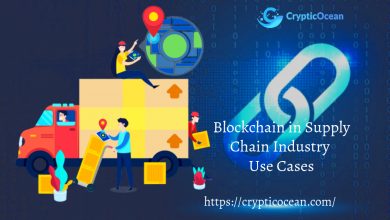Blockchain and the Internet of things (IoT) – A Complete Guide for 2020
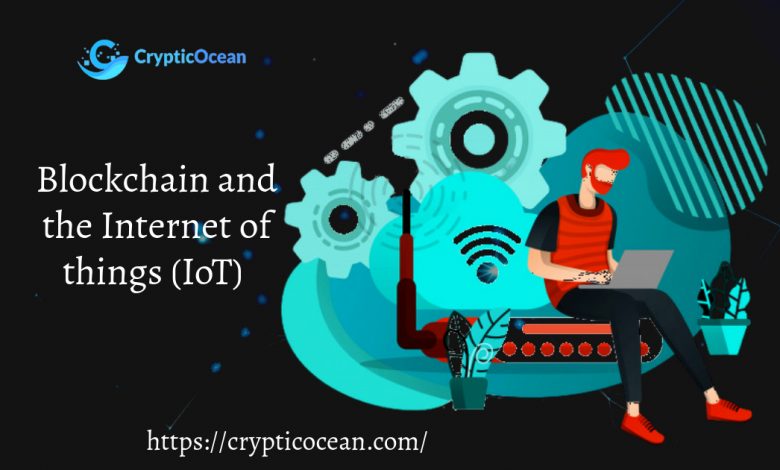
Blockchain coupled with IoT enhances security and brings transparency in IoT ecosystems.
Blockchain offers a scalable and decentralized environment to IoT devices, platforms, and applications.
On the other hand, the Internet of Things (IoT) opens up countless opportunities for businesses to run smart operations.
Every device around us is now equipped with sensors, sending data to the cloud.
Therefore, combining these two technologies can make the systems efficient.
Here are some cases of Blockchain and the Internet of things which is impactful in several industries and they are as follows –
Useful cases of Blockchain and the Internet of things (IoT)
1. IOT in Insurance
Blockchain technology is useful in several industries.
Blockchain getting along with IoT works in specific industries.
The main use case of blockchain in insurance is smart contracts and the enhancement of other applications such as claims management, fraud management, legal sector applications, and even the usage of technologies in an insurance context.
In the scope of Blockchain and the Internet of things, it’s interesting to look at the combination of Blockchain and the Internet of things as it’s used in insurance and will increasingly be, moving beyond the pure telematics model to the connection of real-time IoT data in various perspectives for various intelligent automated insurance policy applications.
Although this might seem like a very future application of blockchain in the insurance industry it is worth noting that from an IoT investment perspective, early 2017 IDC forecasted that insurance would be among the fastest-growing industries in the period until 2021.
2. Manufacturing and security to ERP and autonomous decisions
In the context of technologies, AI, IoT, and blockchain technology combined together has a role in third-generation security.
These are not the only securities that fit in the scope of IoT or that will matter in this mix, depending on scope and systems.
The convergence of IT and OT ( operational technology ) and manufacturing technologies are essentially revolving around data, increasingly autonomous decisions based upon data analysis.
IoT, blockchain, and next-generation security cannot just cover cybersecurity as we know it but also security challenges on, for example, a plant floor or industrial environment level whereby critical infrastructure is increasingly attractive for ‘the bad guys’ but also different from security as we know it.
In many businesses with lots of heavy machinery or other forms of OT, CIOs and IT departments will often be closely involved because of the critical role of all that technology, and the ways OT is being looked upon from the same view as IT in regards with, for instance, security.
Still, in some areas the distinction is clear.
For example, You won’t quickly see an IT worker repair a high-tech oil drill and, the other way around, you won’t see an engineer who takes care of the technologies to assemble cars, sit in a meeting on using predictive analytics to protect the corporate network from cyberthreats.

3. Smart buildings to the energy industry
One of the areas where this happens is leveraging energy coming from local solar or wind systems and microgrids in the scope of energy efficiency and facility optimization.
The recording of the autonomous, machine to machine transactions regarding electricity use is another blockchain application of digital platforms opportunities and business models.
Blockchain and the Internet of things-enabled energy are now increasingly digital and decentralized on various levels including sensors as on IoT and critical power buildings, one can easily imagine a scenario whereby excess renewable energy could be sold and bought via blockchain.
In fact, it’s one of many examples that is given in the NIST report on blockchain technology, presented in early 2018.
4. Automotive Industry
These industries being digitzalied nowadays, are using Iot enabled sensors to develop fully automated vehicles.
This is helpful in passing on information easily and quickly along with decentralized networks to multiple users.
The automotive industry is one of the interesting Blockchain and the Internet of things use cases where the combined technology can disrupt automated fuel payment, autonomous cars, smart parking, and automated traffic control.
To illustrate this case study, NetObjex has demonstrated the smart parking solution using Blockchain and the Internet of things.
It helps in finding a vacant space in the parking lot and automates the payments using crypto-wallets.
5. Smart homes
Blockchain and the Internet of things enable the home security system to be managed remotely from the smartphone.
Blockchain could elevate the smart home to the next level by solving security issues and removing centralized infrastructure.
Telstra, Australian telecommunication, and media company are one of the IT use cases which provide smart home solutions.
The company has implemented blockchain and biometric security to ensure no one can manipulate the data captured from smart devices.
Sensitive user data such as biometrics, voice recognition, and facial recognition are stored on the blockchain for improved security.
Once the data is saved on the blockchain, it cannot be modified, and the access is only provided to the right person.
6. Pharmacy Industry
The issue of counterfeit medicines in the pharmaceutical sector is increasing with every passing day.
The pharmacy industry is responsible for developing, manufacturing, and distributing drugs, it is difficult to track the complete journey of drugs.
The transparent and traceable nature of blockchain technology can help to monitor the shipment of drugs from its origin to the destination of the supply chain.
Mediledger is one of the healthcare use cases in, it is designed to track the legal ownership of the prescribed medicines.
Transparency and traceability are important in terms of monitoring healthcare products.
It is a blockchain-based platform offering a simplified payment process, controlled users access, and stop counterfeiting drugs from invading the supply chain.
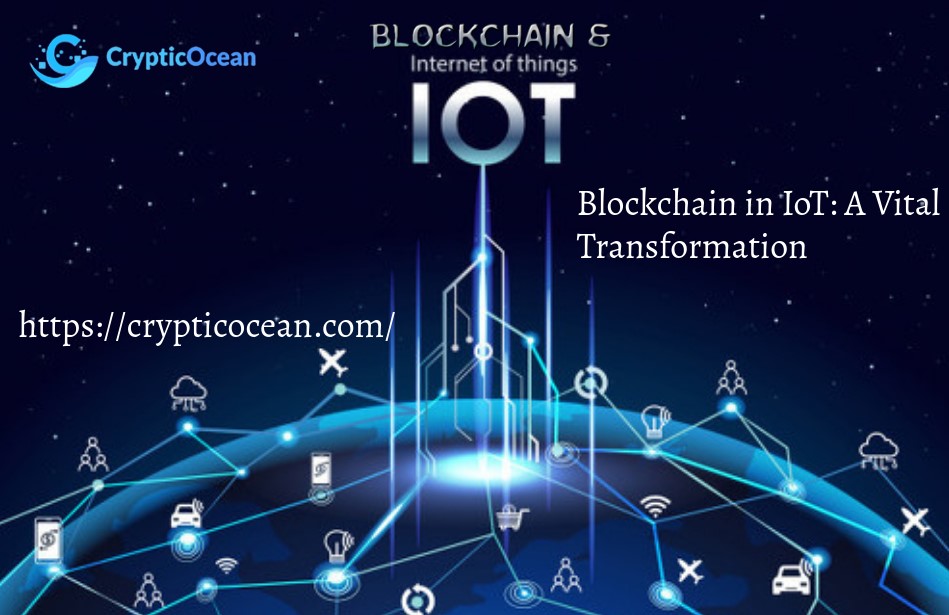
7. Agriculture
Blockchain and the Internet of things has the potential to reshape the food production industry from farm to grocery to home.
By installing IoT sensors in the farms and sending its data directly to the blockchain can help enhance the food supply chain to a greater extent.
Pavo is one of the blockchain IoT use cases that brings unparalleled transparency.
The information collected from Pavo’s IoT hardware device installed in farms gets saved on the blockchain.
It enables farmers to enhance farming techniques by looking at the captured data, while distributors, retailers, and consumers to make informed decisions about buying a specific crop or food item.
Also, Pavo marketplace allows farmers to pre sell crops through smart forward contracts that can prevent farmers from having to wait for payment after harvest.
8. Water Management
Smart water sensor that can track how much water you use and automate the shutdown of water if any leak is detected.
Using NetObjex’s IoT and blockchain services, it can monitor and store the data.
Two more companies Libelium and Airalab have teamed up to create a project, “Drone on the Volga”.
It uses a drone equipped with IoT sensors and blockchain technology to gather water contamination levels autonomously.
The drone collects water readings of the Kuybyshev Reservoir in the Volga River and publishes the data to the Ethereum Blockchain in real-time.
By using IoT, the drone can understand where and when readings were taken, helping scientists discover where contamination has come from.
Conclusion
In conclusion, Several industries have begun to explore the potential applications of Blockchain and the Internet of things to improve efficiency and bring automation.
Cryptic Ocean is a blockchain technology company that provides end-to-end blockchain development and blockchain consulting services to multiple business domains.
Our goal is to help companies adopt new technologies and simplify complicated issues that arise during technology evolution.
Contact us for the best solutions about the use of blockchain technology to solve the toughest challenges faced by the world today.
FAQ’s
Can Blockchain strengthen the Internet of things?
In the blockchain-enabled world, its management systems can be leveraged to strengthen IoT security.
Such systems enable information about goods, provenance, identity, credentials, and digital rights.
Is Blockchain part of IoT?
The distributed ledger technology has met the distributed internet of things.
IoT applications are certainly distributed by definition.
It will play a role in how devices will communicate directly with each other.
In fact, the convergence of blockchain and the Internet of Things is on the agenda for many companies and there are existing implementations, solutions, and initiatives in several areas.
Is Blockchain the next Internet?
The blockchain is essentially the next internet as it has powered Web 3.0.
It can also be considered as a new internet.
What is Permissioned Blockchain?
Permissioned blockchains are additional blockchain security system, as they maintain an access control layer to allow certain actions to be performed only by certain identifiable participants.
If you found this article interesting, here you can find more Articles.
